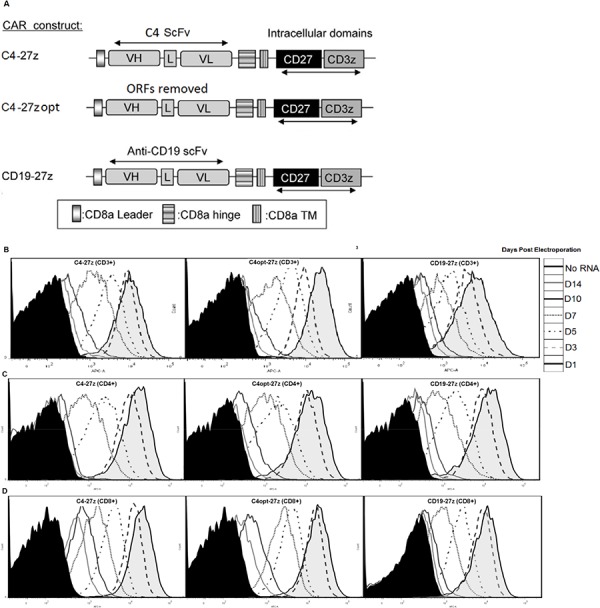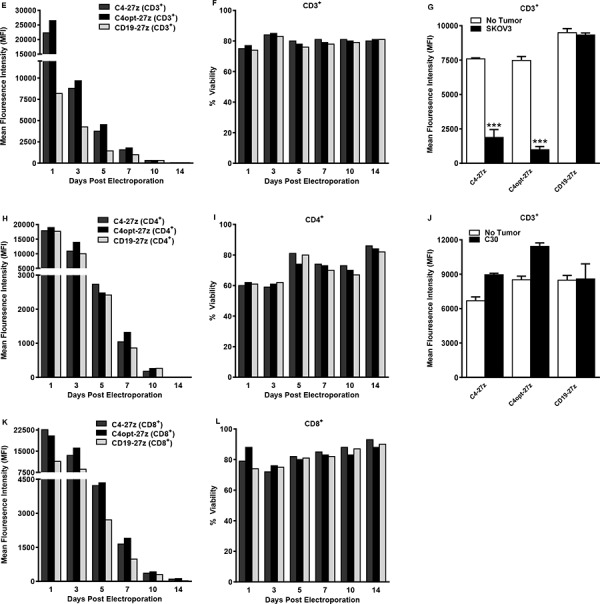Figure 1. Generation, expression and viability of FRα-specific CAR-transfected human T lymphocytes in vitro.


A. A schematic representation of FRα-specific, C4 or CD19 (control) CAR constructs containing the CD3ζ cytolytic domain in combination with the CD27 costimulatory molecule. VL, variable light chain; L, linker; VH, variable heavy chain; TM, transmembrane region. B–D, E, H, K. CAR expression as measured by APC-A or change in mean fluorescence intensity (MFI) at different time points after electroporation with C4-27z, C4opt-27z or CD19–27z RNA. Electroporated CD3+, CD4+ or CD8+ T cells (containing no RNA) were used as negative controls (filled histograms). F, I, L. Cell viability was detected using 7-AAD (BD Viaprobe). G, H. Expression of C4-27z and C4opt-27z, but not CD19–27z (control CAR) declines rapidly (measured at 72 hr) after 24 hr coincubation with FRα+ SKOV3 tumor on day 1 (student t test, p < .001). Conversely, expression of C4-27z, C4opt-27z and CD19–27z do not change after co-incubation with FRα− C30.
